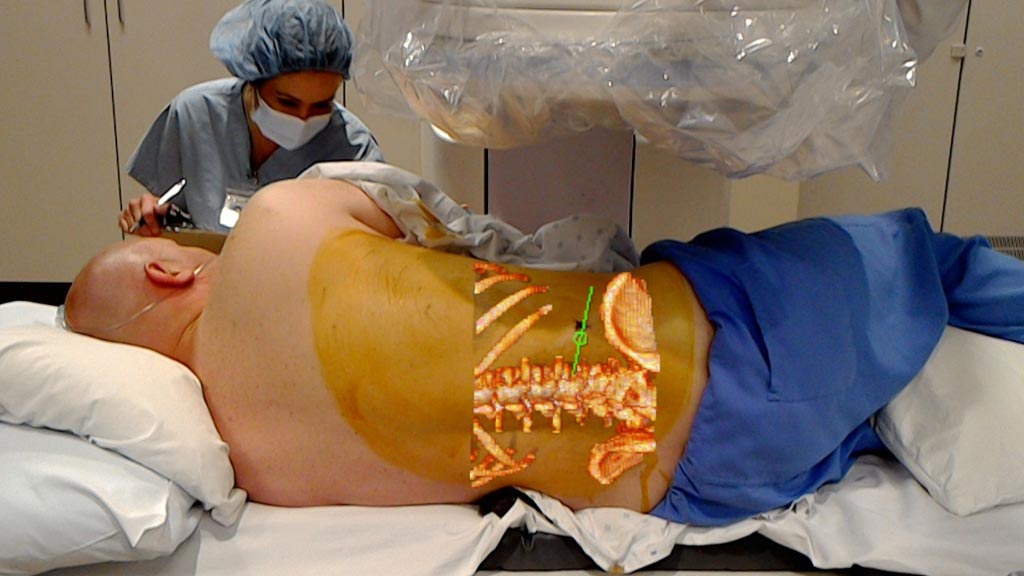First Surgical Use of 3D Reality System
By MedImaging International staff writers
Posted on 18 Jul 2017
A new augmented reality system has been used for the first time on a patient during surgery rendering interactively overlaid imaging studies in 3D on the body of the patient.Posted on 18 Jul 2017
The system uses 3D imaging, advanced segmentation and rendering, motion correction, registration, various virtual tools, 3D annotation, and other new technologies.

Image: A patient undergoing an APLD procedure with the help of OpenSight augmented reality technology (Photo courtesy of Novorad).
The OpenSight Augmented Reality (AR) system was developed by Novorad (American Fork, UT, USA) and was used together with the HoloLens Virtual Reality (VR) headset developed by Microsoft. The system was used to perform an Automated Percutaneous Lumbar Discectomy (APLD) procedure intended to reduce pain linked to a herniated disk.
The OpenSight software is designed to render patient imaging studies in 3D overlaid directly over a patient’s body in real-time. The system works by registering Magnetic Resonance Imaging (MRI), Computed Tomography (CT), or other imaging studies over the patient during a procedure allowing the surgeon to see dynamic holograms of the internal anatomy of the patient.
The system could increase the accuracy and efficiency of surgical procedures. The OpenSight software is still pending US FDA approval.
Research and Development Director at Novarad, Steve Cvetko, said, “We are using cutting-edge augmented reality to display a 3D version of a patient’s anatomy on the actual patient. It offers a true, life-size rendering with exact alignment and orientation, which is valuable for medical education, research and, of course, surgery.”
Related Links:
Novorad














